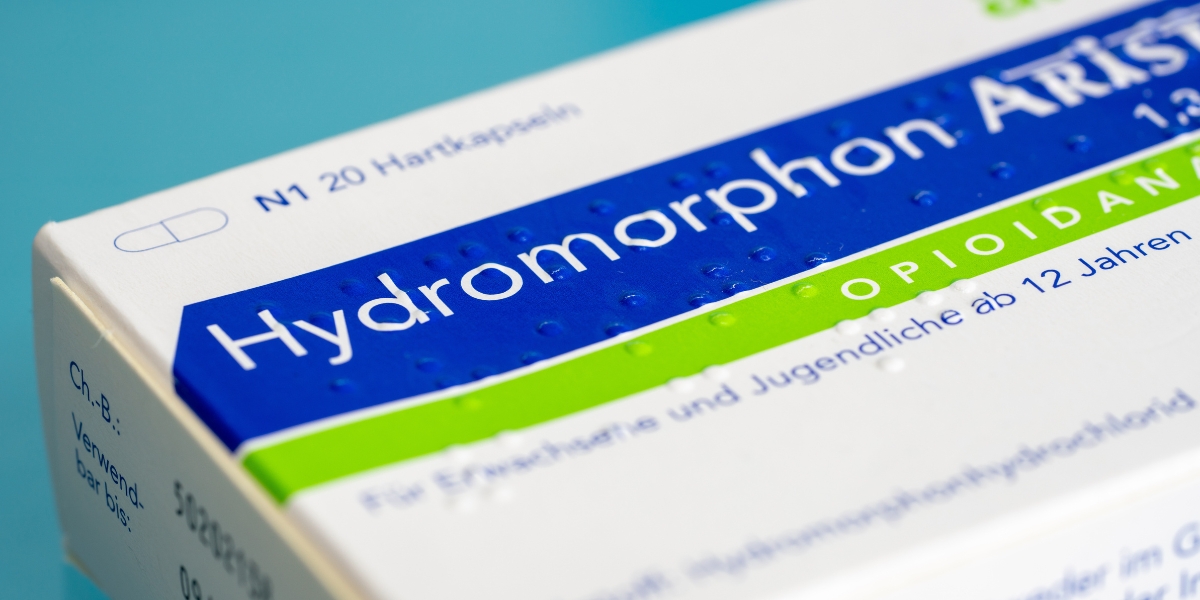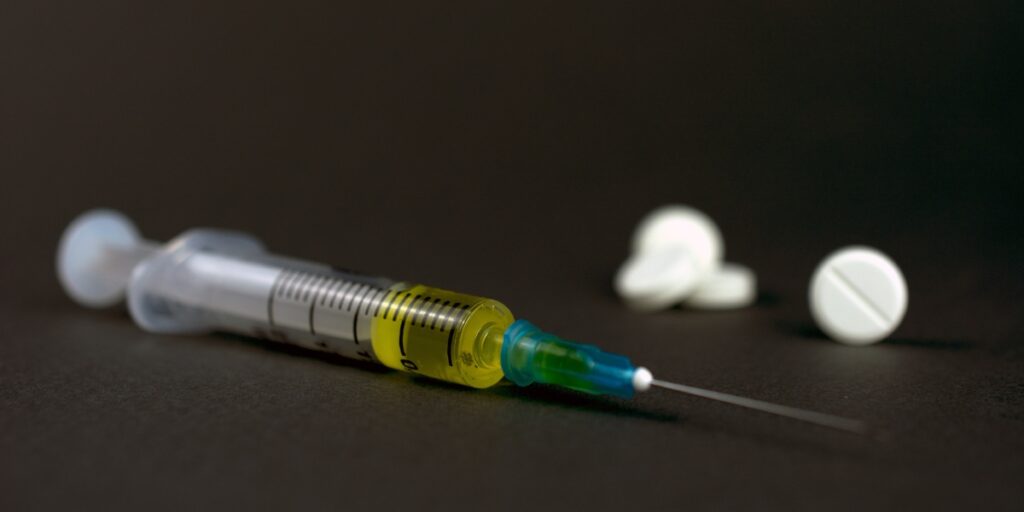What Is Dilaudid?

Dilaudid, or hydromorphone, is a potent synthetic opioid. It quickly relieves pain in patients who do not respond to less powerful pain medications. While other opioid medication’s brand names may be more recognizable, hydromorphone is effective and highly addictive.
According to the US Drug Enforcement Agency (DEA), about 4 million hydromorphone prescriptions are written by doctors every year. Although this amount may seem high, it does not account for people with fake prescriptions or that get Dilaudid illegally.
Even more concerning is the reality that people with opioid use disorders who cannot get prescriptions regularly resort to illicit black-market drugs like heroin to maintain their addiction.
What Is Dilaudid?
Dilaudid is the brand name for hydromorphone, a powerful opioid painkiller. Hydromorphone belongs to a dangerous category of synthetic opioids, such as fentanyl.
Doctors typically prescribe hydromorphone when other pain relievers haven’t proven to work. The medication offers relief for mild to intense pain associated with surgical operations, chronic pain conditions, and terminal cancers
Dilaudid acts as a central nervous system depressant, binding to opioid receptors inside the brain. This binding process triggers a sudden rush of dopamine, a chemical that produces emotions of euphoria. Hydromorphone reduces the brain’s ability to sense pain by increasing dopamine release and inducing sedation.
People with chronic pain or terminal illnesses often grow tolerant of weaker opioids. They need larger doses or more potent medications such as hydromorphone to manage their pain. However, increased potency also creates a greater risk for abuse and addiction.
Dilaudid is available in several forms, including immediate and extended-release tablets, suppositories, and liquid solutions for injection. In the United States, hydromorphone is a Schedule II controlled substance because of its potential for misuse and addiction.
There are several slang names used to refer to Dilaudid, which include:
- D
- Dust
- Dillies
- Footballs
- Peaches
- M-80s
- Juice
- Smack

Is Dilaudid Addictive?
Dilaudid is considered one of the world’s most potent synthetic opioids and is incredibly addictive. It takes two to three weeks for individuals to become physically dependent on hydromorphone.
In addition to offering pain relief, hydromorphone triggers dopamine release in the brain, leading to extreme euphoria and happiness. Individuals who constantly misuse Dilaudid are seeking this sensation.
However, attaining their desired high will become increasingly challenging over the years, and previously effective doses will not produce the same outcomes. This is referred to as tolerance.
People may take higher hydromorphone doses more frequently or even mix substances to achieve their desired results as tolerance develops. Once physical dependence and tolerance are established, stopping hydromorphone use causes withdrawal symptoms quickly— this pattern of using drugs to chase a high and avoid withdrawal fuels the cycle of addiction.
Dilaudid Addiction
It’s important to know that not everyone who uses Dilaudid will develop an opioid use disorder. People who take medication properly for short-term pain relief have a low risk of addiction. This includes following a doctor’s instructions and reading the prescription label. However, some factors increase the chance of developing opioid use disorder.
Recognizing the signs of Dilaudid addiction is crucial to identify when someone may struggle with a prescription drug abuse problem. Signs of Dilaudid addiction include:
- Running out of the prescribed medication before the next refill is due.
- Visiting multiple doctors to obtain numerous Dilaudid prescriptions.
- Taking Dilaudid from friends or family members without their knowledge or consent.
- Purchasing Dilaudid illegally from street dealers or other illicit sources.
- Experiencing intense cravings or strong urges to use Dilaudid.
- Devoting a significant amount of time to obtaining, using, or recovering from the effects of Dilaudid.
- Engaging in deceptive behavior, such as lying about or hiding Dilaudid use.
- Using Dilaudid in ways other than prescribed, such as crushing, snorting, or injecting it.
- Combining Dilaudid with other substances like muscle relaxants, benzodiazepines, or alcohol enhances its effects.
- Withdrawing from social activities and neglecting personal and professional responsibilities.
- Displaying physical changes like noticeable weight loss, yellowing of the skin, or neglecting personal hygiene.
- Inability to control or stop using Dilaudid despite experiencing negative consequences.
- Engaging in risky behavior to obtain and use Dilaudid.
- Experiencing withdrawal symptoms when Dilaudid use is abruptly stopped.
It is essential to understand that addiction is a chronic disease that affects the mind and body. Individuals struggling with Dilaudid addiction often know the harm and consequences of their substance use but find it challenging to stop without professional help.

Dilaudid Side Effects
Side effects of Dilaudid vary from person to person. Factors that influence this include medical conditions being treated, tolerance levels, physical health, mental well-being, and concurrent substance use. Hydromorphone’s effects can start in at least 30 minutes when swallowed in tablet form. This can be even faster when snorted or injected.
Common side effects of Dilaudid include:
- Headache
- Dry mouth
- Drowsiness
- Abdominal pain
- Shallow breathing
- Sweating
- Itching
- Flushed skin
- Cold and clammy skin
- Low blood pressure
- Loss of appetite
If you experience any concerns or unusual symptoms, you must call your doctor immediately. Serious side effects require emergency medical attention. These include allergic reactions, nausea, vomiting, diarrhea, agitation, hallucinations, trouble breathing, and severe stomach or intestinal cramping.
The US Food and Drug Administration (FDA) requires a warning on prescription drug labels concerning potential drug interactions and adverse effects. People who ignore the warning sections, typically older adults and people who use Dilaudid while drinking alcohol, are at greater risk of suffering from an overdose.
If you suddenly stop taking Dilaudid or “quit cold turkey,” it can lead to severe withdrawal symptoms. Your doctor may recommend a medical detox process. Medically supervised medical detox programs provide close monitoring and treatment of withdrawal symptoms to ensure safety. Following detox, the treatment program can address the various aspects of your dependence and addiction.

Dilaudid Addiction Treatment in Northridge, California
If you or a loved one is struggling with opioid use disorder, Northridge Addiction Treatment Center is here to help.
At our private residential treatment center, we offer comprehensive, evidence-based care and support to help individuals on their journey to recovery.
Our experienced staff of licensed professionals provides onsite medical detox, ensuring a safe withdrawal process. Medical supervision and care during detoxification can significantly reduce the risk of experiencing post-acute withdrawal syndrome (PAWS) and relapse.
We collaborate with you to understand your unique needs and develop a personalized treatment plan to equip you with the necessary tools, knowledge, and healthy coping skills to support your long-term recovery and well-being.
Contact us now. A life rooted in recovery awaits you, and we are here to support you every step of the way.
Find Meaningful Recovery
Our caring and compassionate specialists are eager to help you comfortably navigate this journey to recovery. Our individualized treatment plan, programs, and therapies may be a perfect match for you or your loved one. Let us assist you in living the happy life you deserve. It starts with a phone call.




